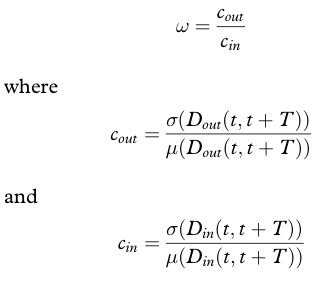Measuring the Bullwhip Effect in Supply Chains
The bullwhip effect in supply chains has been around for some time now. The term “bullwhip effect” originated at Procter & Gamble, and is defined as: demand amplification across echelons within a supply chain. This describes the effect that end customer demand may be very static (as for “Pampers” by Procter & Gamble), but the demand experienced by the manufacturer or supplier shows amplified demand variations. (Fransoo and Wouters (2000))
Causes of the Bullwhip Effect
Lee et al. (1997) first analyzed the causes of the bullwhip effect:
- Demand forecast updating
Demand forecast usually are based on the orders of the preceding echelon and not on the actual customer demand - Order batching
Orders are usually aggregated to batches to save cost. - Price fluctuations
Promotions and other effects can lead to price fluctuations of the product. When the price is perceived to be lower, orders go up and vis-versa. - Rationing and shortage gaming
For some products (eg. new iPhone) which may be short in supply, game theory suggests that it might be rational to order more than actually needed, since the number of delivered products usually is a percentage of the number of products ordered.
Measuring the Bullwhip Effect
The bullwhip effect is measured per echelon by the following formula:

So first we standardize the standard deviation for incoming and outgoing demand. The bullwhip effect is measured as the quotient of these numbers.
Issues
The following issues arise when measuring the bullwhip effect.
- Aggregation
To measure the bullwhip effect correctly one has to be aware of different data aggregation levels one could choose; one can aggregate demand by echelon, outlet, product, time. Each aggregation will give different insights and different levels of the bullwhip effect. - Incomplete data
There may be a conceptual imbalance between incoming demand and outgoing demand, furthermore the information on those values may be incomplete. - Filtering for causes
To analyze and act on the bullwhip effect, one has to understand the causes of the demand variations at hand.
Findings from case studies
Fransoo and Wouters (2000) find in their specific case study that,
- filtering for causes of the bullwhip effect can be quite challenging.
- the bullwhip effect caused by price fluctuations was negligible.
- shortage gaming did occur and posed a major problem for the supply chain.
Fransoo, J., & Wouters, M. (2000). Measuring the bullwhip effect in the supply chain Supply Chain Management: An International Journal, 5 (2), 78-89 DOI: 10.1108/13598540010319993
Lee, H., Padmanabhan, V., & Whang, S. (1997). Information Distortion in a Supply Chain: The Bullwhip Effect Management Science, 43 (4), 546-558 DOI: 10.1287/mnsc.43.4.546








Add new comment